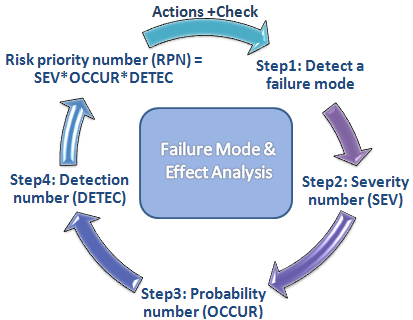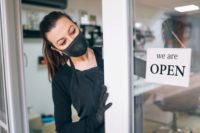The manufacturing industry requires workers to engage in high-risk activities such as soldering, welding, metal cutting, raw material assembling, and heavy lifting and rigging. Moreover, magnetic fields, compressed gases, and harmful radiations can negatively impact a worker’s health. In fact, workplace hazards lead to nearly 150 deaths per day in the U.S.
Apart from causing irreparable damage to workers, occupational accidents cause indirect losses to machinery and the environment, and have a negative impact on workplace productivity. Therefore, it is vital to identify potential occupational hazards and take measures to minimize workplace accidents.
Most accidents happen due to the lack of guards and safety equipment, inadequate or inconsistent training to employees, or compromised safety. Use the information shared in this post to curb the potential hazards that endanger manufacturing workers.
Conduct a thorough risk assessment
Workplace safety in a manufacturing facility is achievable, provided you know the potential sources of safety hazards and the ways to prevent them. Effective risk assessment can help you stay cognizant of the hazards present in your plant and shed light on the necessary equipment maintenance and repairs.
Hire a plant assessor to develop a risk assessment plan that identifies all the hazards associated with a particular manufacturing sub-process. An effective risk assessment will also determine the risk level of the hazard, review the safety and working condition of the equipment, and recommend the necessary control measures.
Further, modern and structured techniques, such as FMEA and the Andon board can help manufacturing facility floors assess and manage the safety risks.

Manufacturers can adopt FMEA (Failure Modes and Effects Analysis) to foresee the potential failures and safety issues in the manufacturing process. The technique uses factors like the severity of the issue, its occurrence, and ease of detection to conduct a comprehensive risk assessment of the facility floor.
The Andon board helps production firms and manufacturing facilitys send a signal to the team about a possible defect or issue in the equipment, enabling them to take the necessary action. Such an alert system can help detect the potential hazards in a system, thereby reducing the risk of workplace accidents.
Creating a safe work environment begins with comprehensive risk assessment. Conduct a thorough risk assessment of your manufacturing facility to combat the potential dangers and create a safe working environment for your employees.
Prioritize housekeeping
Manufacturing areas are often messy and unorganized. A cluttered work area with wet or greasy floors, and power cords, stinger leads, or cylinder hoses lying around the walkways can increase the risk of avoidable workplace accidents. As a result, it is critical to keep the aisles, walkways, and the work station clean and free from objects and equipment that may cause slips, falls, and fires.
If the floor around the work station is wet or greasy, place a barricade with a caution tape around that area. Get rid of scrap, metal shavings, and flammable material by placing them in designated bins. The walkways should be free of racks, pallets, hoses, power cords, and other equipment. Arrange all the equipment and accessories in an orderly fashion, thereby reducing the risk of serious accidents.
Require workers to wear the necessary safety gear
Manufacturing workers should always wear protective gear when on the facility floor to reduce the possibility of sustaining injuries. OSHA has made it mandatory for metal workers to wear personal protective equipment (PPE), such as gloves, safety hoods and shoes, earplugs, hard hats, respirators, and full body suits.
For instance, if a worker is involved in moving a heavy metal sheet overhead, he/she should wear a hard hat when on the job. Similarly, electric arc welding is a common operation in a manufacturing facility where the risk of electrocution is high.
Make sure the workers involved are well-insulated from the electrode and the ground using sturdy rubber toes boots and gloves. Wearing protective goggles and welding hoods during the process will protect them from ultraviolet and infrared radiation burns and the toxic welding fumes.
Ensure proper installation of the guarding mechanisms
All manufacturing facilities should be designed to ensure workplace safety. For instance, plate and sheet forming machines and plasma cutting equipment are equipped with guards and safety features to protect the worker’s fingers. If these guards don’t fit properly, the worker could lose his/her fingers.
Similarly, the area around the work station should be protected using guardrails and barriers, allowing only qualified workers to enter the area. Poorly-maintained guards can cause accidental entry into the area, causing barrier-related injuries to workers who aren’t wearing the right safety gear for the job.
If these guarding mechanisms aren’t installed properly, it can cause serious workplace injuries. Make sure to check malfunctioning tools and guarding mechanisms before starting the manufacturing project.
Deliver consistent and adequate training to employees
Regardless of whether the employee is an apprentice or an expert, he/she should be trained to follow the safety protocol, thereby reducing the risk of on-site accidents and injuries. Moreover, because the national safety guidelines for the manufacturing industry keep changing, it is necessary to deliver periodic training to workers, ensuring that only skilled personnel operate on the machinery.
Furthermore, misuse of tools or the lack of expertise can cause serious accidents. Hence, proper training should be provided, enabling workers to use the tools as per the safety protocol.
For instance, workers should never be allowed to handle heavy equipment manually. Instead, they should be encouraged to use powered material-handling equipment such as spreader bars or lifting beams, thereby preventing back, shoulder, and other types of injuries.
Besides educating workers on how to prevent the common workplace accidents, the right training can help them discard scrap safely, report defects in the equipment, and manage maintenance requirements, if any.
In a manufacturing facility, workers may perform complex and dangerous tasks involving welding, cutting, heavy equipment lifting, and raw material assembling. Every workplace should take the necessary safety measures, thereby reducing the risk of workplace accidents.
Use the tips shared in this article to reduce the incidences of minor and major injuries, and ensure a good safety track record for your company.
(Image credit: Wikipedia Commons)



